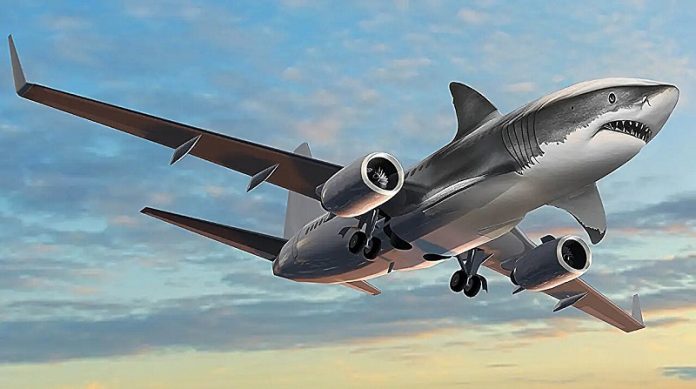
Scientists are looking to sharks for inspiration to make airplanes fly faster and use less fuel.
A researcher from the University of Mississippi believes that the way sharks move through water could help humans travel more efficiently through the air.
Dr. Wen Wu, a mechanical engineering professor at Ole Miss, is working on improving how air flows around planes. His goal is to reduce energy use and make air travel more efficient.
He is partnering with Dr. Louis Cattafesta, an expert in aerospace engineering from the Illinois Institute of Technology, to study how shark skin can inspire better designs for airplanes.
Sharks have tiny, unique scales called denticles that look like three-toed dinosaur tracks. Scientists once believed these denticles helped reduce drag, making sharks swim faster.
This idea even influenced Olympic swimsuits in 2016, which mimicked the ridged surface of shark skin. However, recent studies show that shark skin does not actually reduce drag in normal conditions.
So, why do sharks swim so efficiently?
Wu discovered that the shape of shark bodies and the way water flows around them play a key role. As water moves over a shark’s body, it sometimes detaches, creating swirling currents.
Wu found that water can actually slip underneath the denticles and push against their base, helping propel the shark forward.
This discovery, published in the Journal of Fluid Mechanics, could change how airplanes, ships, and even cars are designed.
By applying shark-inspired surfaces to these vehicles, engineers could reduce drag and improve fuel efficiency.
Even a small reduction in drag could lead to huge energy savings, fewer emissions, and a positive impact on the environment.
Wu’s team will run computer simulations to test how denticle-like surfaces perform in different wind conditions. Cattafesta’s team will conduct real-world experiments based on those simulations. Their goal is to figure out the best size, shape, and placement of denticles to improve aerodynamics beyond what sharks naturally achieve.
In the future, this technology could be used not only for airplanes and cars but also for sportswear to help athletes perform better.
Wu and Cattafesta believe their work could lead to major advancements in transportation and energy efficiency, all thanks to the hidden secrets of shark skin.



